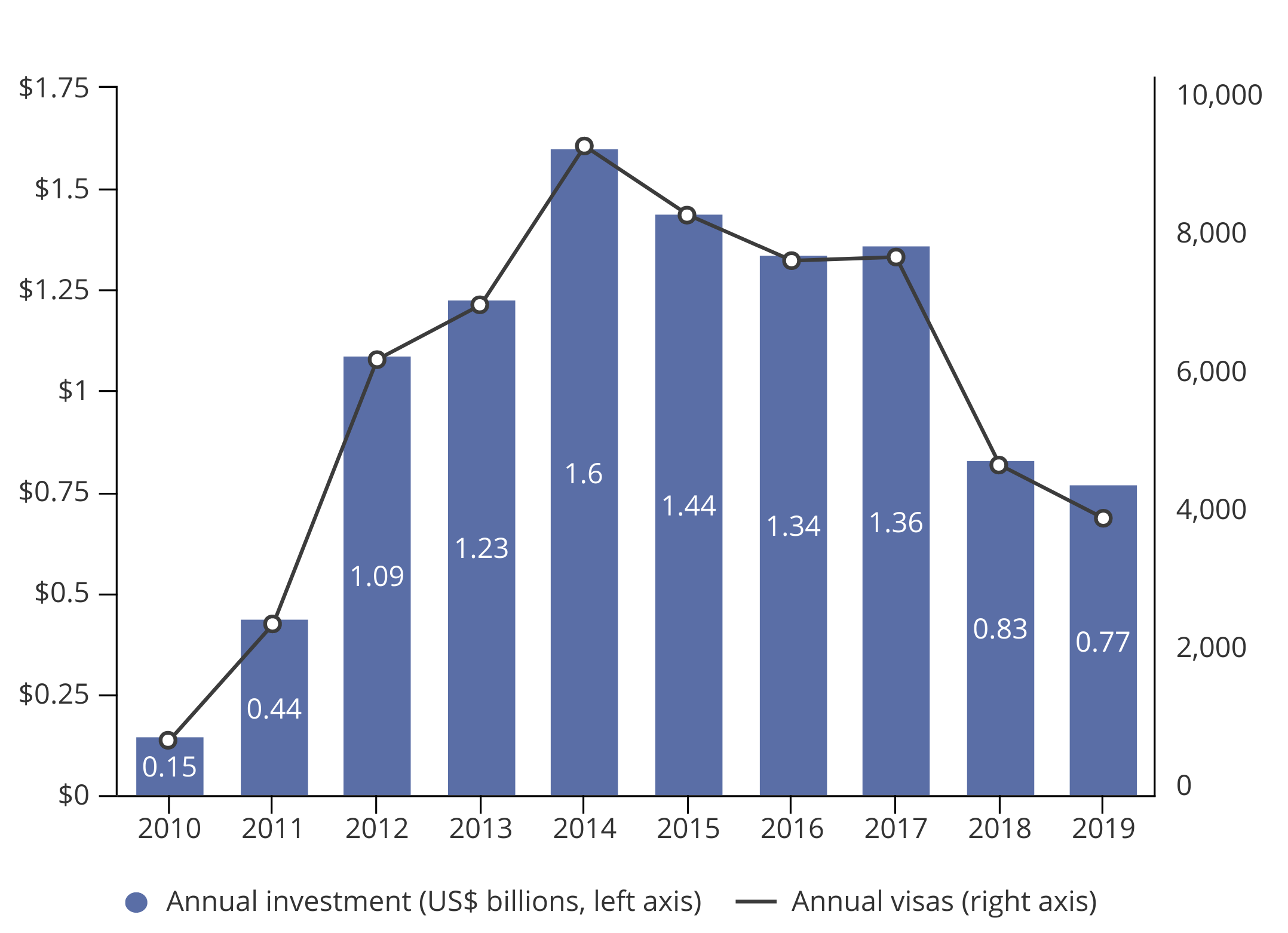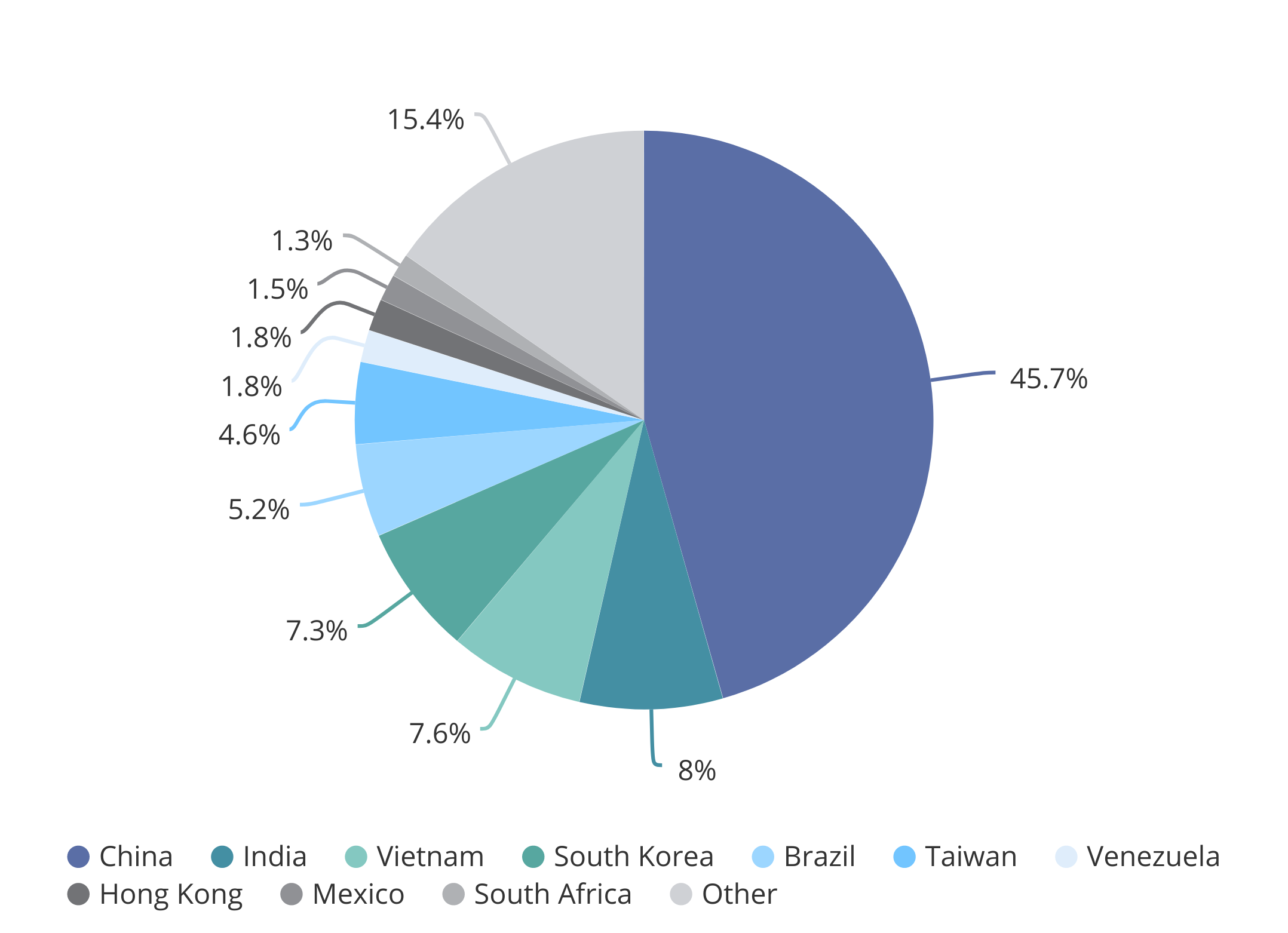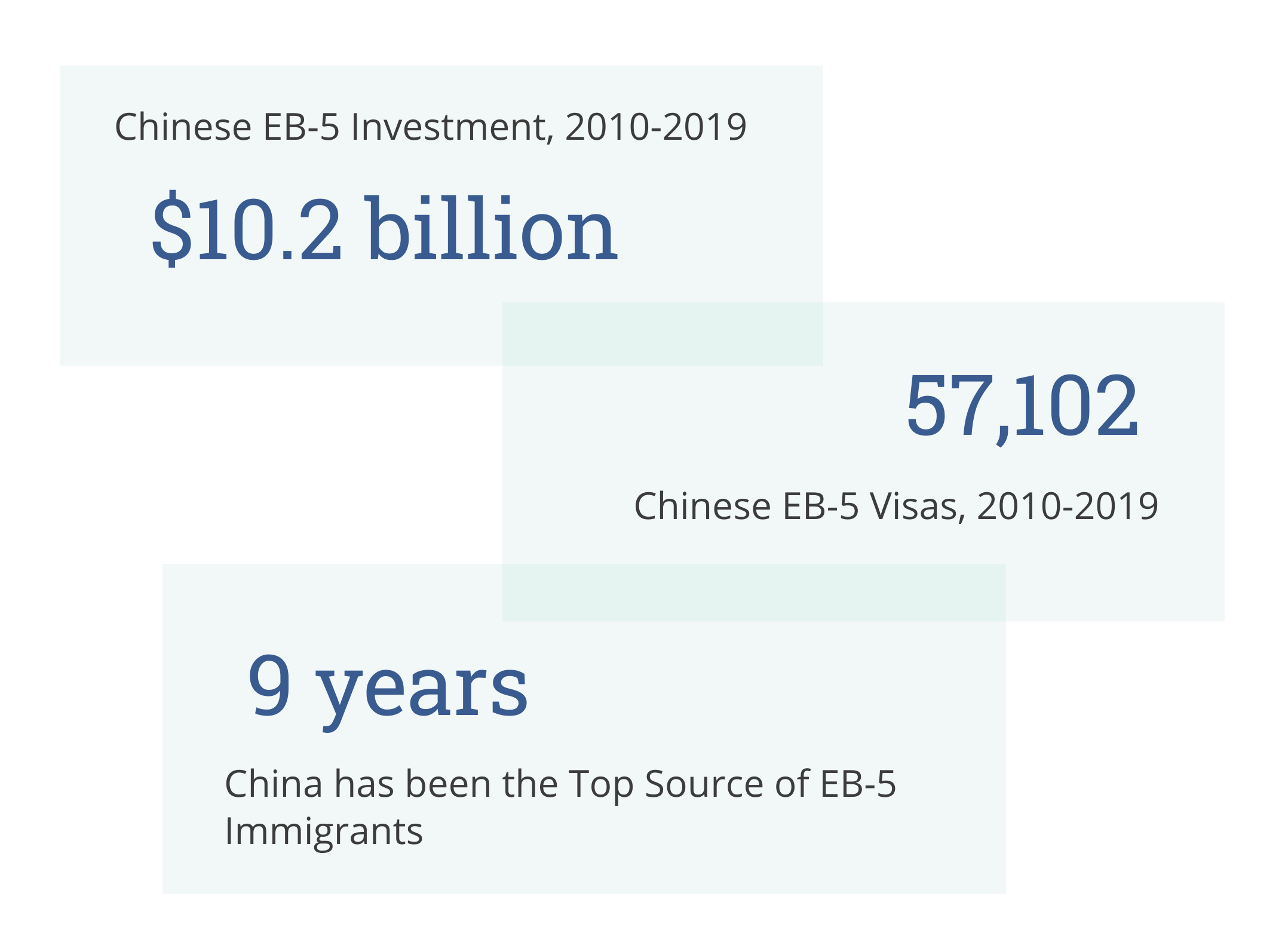EB-5 Investment
The EB-5 program offers green cards to foreign citizens (and their families) who invest $500,000 or more in an American project—often a real estate development—that creates at least 10 jobs in the United States. From 2008-2014, Chinese “immigrant investors” dominated the program, receiving up to 80% of the 10,000 visas allocated each year.
But a cap on the EB-5 visas granted to any single country has caused both the number and dollar-value of Chinese EB-5 investments to fall by more than half since 2014. While EB-5 visas attracted much attention, the program is small—averaging just over $1 billion annually from China—compared with Chinese FDI, education spending, home purchases, and travel.




Dig Deeper:
Sources: US Department of State, Bureau of Consular Affairs, Visa Office; The Associated Press; United States Citizenship and Immigration Services.

